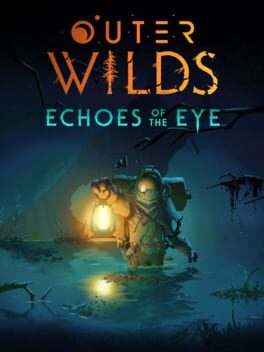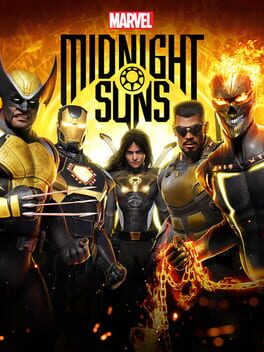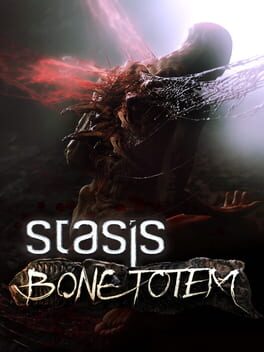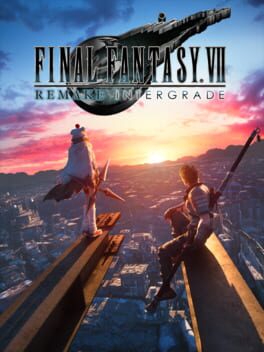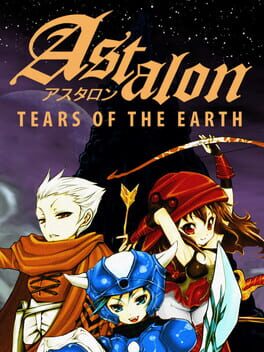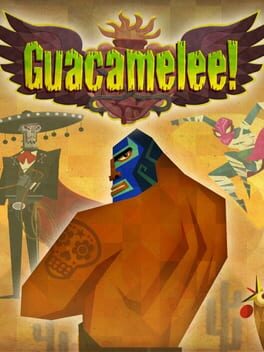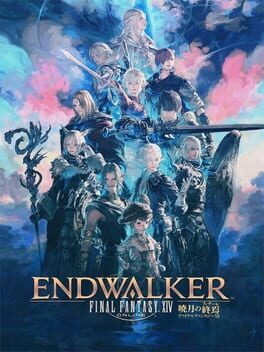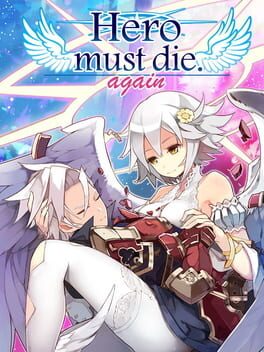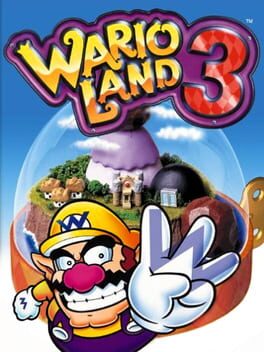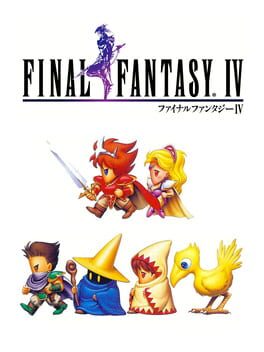EffieArtoria
A really huge expansion pack, feels like it's almost as big as the main game. All the same cunning and storytelling is on display, with almost no written words either.
The only thing dinging it is, it got a bit long in the tooth for me. Every loop you have to jet back to the location of the expansion, and then you have another step of procedures to go through to navigate there, including some timed puzzles that you'll have to reset the whole loop for when you make a wee mistake. I hit a point where I more or less knew all that was going on, but still had several hours of mucking about with stealth sections and timing puzzles to wrestle with before I got to the end. It managed to make the trick of "you had the power all along!" feel a teeny tiny bit tired.
But it still tugged on my heart strings in all the right ways. Plus, it's on a spinning space colony!
The only thing dinging it is, it got a bit long in the tooth for me. Every loop you have to jet back to the location of the expansion, and then you have another step of procedures to go through to navigate there, including some timed puzzles that you'll have to reset the whole loop for when you make a wee mistake. I hit a point where I more or less knew all that was going on, but still had several hours of mucking about with stealth sections and timing puzzles to wrestle with before I got to the end. It managed to make the trick of "you had the power all along!" feel a teeny tiny bit tired.
But it still tugged on my heart strings in all the right ways. Plus, it's on a spinning space colony!
Sometimes I don't like to think.
I like to roll around the map, hoovering up crafting items, stomping on monsters and finding little objectives to complete while I listen to a podcast. I like to play six matches of Queen's Blood back to back without listening to what any of the NPCs have to say, just slapping down my best card combo. This is my favourite part of Rebirth. It never rises to the level of Breath of the Wild or Elden Ring in these segments, but it's an absolutely fine way to wile away an afternoon. It makes me feel self conscious about the game though, because I sunk over a hundred hours into it, and my favourite part is just "fucking about". When it comes to the core of the game, the stuff the game itself seems to think is important, I'm a lot less satisfied.
Rebirth continues the mission of Remake to broadly remake the beats of the original VII, while constantly teasing that maybe this time things might be different. I found a great unpleasant tension between the sections where you get to roam around the overworld, and the sections where you're pulled into the cutscene dimension for a string of back to back boss fights and laboriously paced story. Where the original would have three screens, a cutscene and a boss fight to finish up Dyne, Rebirth instead will have two boss fights, a long action battle chase minigame, three cutscenes, and then a ten minute interlude where you play as Zack picking his nose. I want so much for someone to come in with pruning shears and ask - does the player really need to know what Rufus is up to right now?
Whenever I contrast anything directly with the original, it's an unfavourable comparison. The Shinra Mansion is maybe the worst offender. The fixed perspective spiral staircase where you shrink down to a dot as you descend into darkness is gone, replaced with a lift. In fact, the whole "mansion" is now just two small rooms leading to an unhidden lift, the whole "hidden" element is gone. Instead there is a series of large industrial cube rooms with the game's worst hour of glameplay, a section where you're forced to play Cait Sith. It demolishes the creepy atmosphere of the original.
Still, I spent so much time with this game, and I really did enjoy most of it. The combat system from Remake has had a significant improvement with the addition of combos that use a secondary resource, so now battle will be hopping about between characters, building up metre and firing off commands to build up to the combos, which in turn enable your really flashy limit breaks. It's super satisfying. The game is also something like 50% minigames by volume. They're a mixed bag- Queen's Blood is an all timer, Glide De Chocobo is reeeal bad, and the pirate shooting minigame doesn't support Y Inversion so I personally had an extremely bad time. In the main though they're good, and the variety is fun, it's nice to play a dumbed down version of Mario Kart that you can clear in an afternoon.
Overall I had a good time with the general fillery time consuming aspect of the game, but I really don't rate how it handles the story and a lot of the adaptational elements of the original.
I like to roll around the map, hoovering up crafting items, stomping on monsters and finding little objectives to complete while I listen to a podcast. I like to play six matches of Queen's Blood back to back without listening to what any of the NPCs have to say, just slapping down my best card combo. This is my favourite part of Rebirth. It never rises to the level of Breath of the Wild or Elden Ring in these segments, but it's an absolutely fine way to wile away an afternoon. It makes me feel self conscious about the game though, because I sunk over a hundred hours into it, and my favourite part is just "fucking about". When it comes to the core of the game, the stuff the game itself seems to think is important, I'm a lot less satisfied.
Rebirth continues the mission of Remake to broadly remake the beats of the original VII, while constantly teasing that maybe this time things might be different. I found a great unpleasant tension between the sections where you get to roam around the overworld, and the sections where you're pulled into the cutscene dimension for a string of back to back boss fights and laboriously paced story. Where the original would have three screens, a cutscene and a boss fight to finish up Dyne, Rebirth instead will have two boss fights, a long action battle chase minigame, three cutscenes, and then a ten minute interlude where you play as Zack picking his nose. I want so much for someone to come in with pruning shears and ask - does the player really need to know what Rufus is up to right now?
Whenever I contrast anything directly with the original, it's an unfavourable comparison. The Shinra Mansion is maybe the worst offender. The fixed perspective spiral staircase where you shrink down to a dot as you descend into darkness is gone, replaced with a lift. In fact, the whole "mansion" is now just two small rooms leading to an unhidden lift, the whole "hidden" element is gone. Instead there is a series of large industrial cube rooms with the game's worst hour of glameplay, a section where you're forced to play Cait Sith. It demolishes the creepy atmosphere of the original.
Still, I spent so much time with this game, and I really did enjoy most of it. The combat system from Remake has had a significant improvement with the addition of combos that use a secondary resource, so now battle will be hopping about between characters, building up metre and firing off commands to build up to the combos, which in turn enable your really flashy limit breaks. It's super satisfying. The game is also something like 50% minigames by volume. They're a mixed bag- Queen's Blood is an all timer, Glide De Chocobo is reeeal bad, and the pirate shooting minigame doesn't support Y Inversion so I personally had an extremely bad time. In the main though they're good, and the variety is fun, it's nice to play a dumbed down version of Mario Kart that you can clear in an afternoon.
Overall I had a good time with the general fillery time consuming aspect of the game, but I really don't rate how it handles the story and a lot of the adaptational elements of the original.
Not too much to add to what's been said already. It's weird, combining some really fun card strategy battle stuff with a load of weird, bland social interaction stuff. It feels like Fire Emblem Three Houses, if all the Houses were slightly bland takes on Marvel characters. Tons of good ideas, more than a few bad ideas, and a lot of stuff that's just not executed as well as it might be. Case in point- after every level it mocks up a comic book cover for that adventure with your heroes splashed all over the page, except all the titles are just like "Good Guys Win", "Spider-Man does Punch", etc. Kind of sad it didn't do well, because I could easily imagine a more polished version of this that's absolute dynamite.
1989
I found this more interesting than fun, it's pretty divorced from the stuff I'm used to enjoying in RPGs- dense story, character, tactical combat. Instead there's a lot of slow journeys of attrition, fighting dozens, maybe hundreds of random encounters on auto, watching your HP tick down until you have to warp back to town and start over again. I think there's something interesting there that I've never been able to enjoy, but I don't know if this is the game to sell me on it.
Shelved it after many hours but I had only just got the aqua scooter. Real highlight was the people who love junk, just some funny little guys who love living in a dump. More power to them.
Shelved it after many hours but I had only just got the aqua scooter. Real highlight was the people who love junk, just some funny little guys who love living in a dump. More power to them.
2023
I wanted to like this more, it starts out so well. There's a beautiful retro 3D style that emulates the FMVs of the late 90s when everyone was just so excited to see 3D renders, and you're thrown into this industrial sci-fi horror scenario. It has some nice tweaks on the graphic adventure format, letting you right click to see where every interactable is, and putting all puzzles & items on dedicated zoomed in interaction shots so it's hard to miss the important stuff. And yet, I still wound up in the same rut as the old games: completely unable to understand the game's logic.
"This thermite will eat through anything, EVEN underwater", the game tells me. Fantastic. I've gone on a long quest to assemble the thermite, and finally, it will solve the puzzle I've been stuck on for ages: blasting through the hull of an old ship to grant me access to the next area. Except. It doesn't. The characters continue to gibber about how great the thermite is, but whenever I try and rub it on the hull it stubbornly refuses to work. Elsewhere, I line up the panels in an image puzzle and clone a demonic shrimp. "Perfect," the characters announce. "It's just like the old one. This is exactly what we need." I have no idea why we need this shrimp.
Most of all, it feels like the story just isn't unfolding in a very satisfying way. There are a lot of well written log entries - naturally just lying around everywhere - which tell the story of a doomed drilling operation. At first they're fascinating, but they start to become repetitive without progressing anything. Rather than drawing closer to the point, each one of them reads more or less like "I hate working for Devil Incorporated. They forced my mum to mine asteroids to pay off my medical debt AND they won't let me eat the glowing green slime I found at the bottom of the sea. Well joke's on them, I'm eating it anyway!!!" There's a lot of tantalising world building to do with some sort of demonic religious/corporate overlord that took over the world, but I got the sense that this was set dressing that the game didn't want to explain. It's unfortunate, because it's such a big juicy idea that it totally distracts from the main story. I don't care at all about the magic mushrooms on the sea floor, I want to know about Cayne's Reign!
Alas!
Nothing but praise for Moses, however. He is too pure for this world.
"This thermite will eat through anything, EVEN underwater", the game tells me. Fantastic. I've gone on a long quest to assemble the thermite, and finally, it will solve the puzzle I've been stuck on for ages: blasting through the hull of an old ship to grant me access to the next area. Except. It doesn't. The characters continue to gibber about how great the thermite is, but whenever I try and rub it on the hull it stubbornly refuses to work. Elsewhere, I line up the panels in an image puzzle and clone a demonic shrimp. "Perfect," the characters announce. "It's just like the old one. This is exactly what we need." I have no idea why we need this shrimp.
Most of all, it feels like the story just isn't unfolding in a very satisfying way. There are a lot of well written log entries - naturally just lying around everywhere - which tell the story of a doomed drilling operation. At first they're fascinating, but they start to become repetitive without progressing anything. Rather than drawing closer to the point, each one of them reads more or less like "I hate working for Devil Incorporated. They forced my mum to mine asteroids to pay off my medical debt AND they won't let me eat the glowing green slime I found at the bottom of the sea. Well joke's on them, I'm eating it anyway!!!" There's a lot of tantalising world building to do with some sort of demonic religious/corporate overlord that took over the world, but I got the sense that this was set dressing that the game didn't want to explain. It's unfortunate, because it's such a big juicy idea that it totally distracts from the main story. I don't care at all about the magic mushrooms on the sea floor, I want to know about Cayne's Reign!
Alas!
Nothing but praise for Moses, however. He is too pure for this world.
Actually had more fun with this than the main game. Short and sweet, it gives you an absolutely juiced character to steamroll the combat and filters the side content down to a couple of fun minigames. None of the bloat or reptition of the main game. Only major downside is in the second act when they start wheeling out Tetsuya Nomura's edgiest creations, Sephiroth-alikes who should have been left to history.
Really lovely little retro Metroidvania/Search Action game with a couple of unique gimmicks. You have three characters that you swap between who develop their own unique strengths and weaknesses as you unlock upgrades, and there's a death loop where healing is basically nonexistant, but death sends you to a shop where you can cash out currency and then respawn back at the start of the map. Adds up to a pretty satisfying experience, exploring, trying to hold on to every hit point until the bitter end, then launching back in with juiced stats.
There are a couple of annoying or disappointing elements.
The tower is very big and rambling, which is fun to explore at first, but when you're backtracking in the late game it's easy to waste minutes of time only to hit an unmarked wall you forgot about and realise you have to take a completely different route. There's a lot of tantalising story hints thrown out, and I had hoped that exploring the most difficult optional areas would offer some answers, but they all give unsatisfying rewards instead.
Overall it's very well paced and a great size. The map feels expansive, but I 100%ed the main game in under 20 hours, which is pretty perfect for me. The art style is really gorgeous and all the characters feel great once they find their rhythm. Absolutely worth picking up if you like the genre.
There are a couple of annoying or disappointing elements.
The tower is very big and rambling, which is fun to explore at first, but when you're backtracking in the late game it's easy to waste minutes of time only to hit an unmarked wall you forgot about and realise you have to take a completely different route. There's a lot of tantalising story hints thrown out, and I had hoped that exploring the most difficult optional areas would offer some answers, but they all give unsatisfying rewards instead.
Overall it's very well paced and a great size. The map feels expansive, but I 100%ed the main game in under 20 hours, which is pretty perfect for me. The art style is really gorgeous and all the characters feel great once they find their rhythm. Absolutely worth picking up if you like the genre.
I find this one kind of all over the place. At the start it feels really glossy and polished, an enormously high budget remake of a classic full of love and craft. But then as it goes on and everything gets stretched out the seams start to show. There are good bits, but they're heavily watered down. It kind of wants its own Director's Cut that whittles it down to 8 or 9 hours.
The highlights are:
- characterisation for the leads, especially Cloud's contrasting relationships with Tifa & Aerith
- any topside view of Midgar with eerie synthetic lights in a sea of darkness
- Solid action RPG combat & progression system
- the models for every notable character
And the downsides are
- enormous padding in terms of large sidequest hubs with boring quests, mandatory busywork, large dungeons injected wherever they can think of, dungeon recycling on thin pretenses
- camera feels really claustrophobic, every town area seems to be a network of long narrow tunnels with no visible landmarks, making navigation a nightmare
- new story additions that just damage the pacing (the plot ghosts that show up to go "OoOoOoOoh what if the plot was different this time", but then the plot basically plays out the same)
- every NPC who isn't notable looks soulless by comparison to the designed NPCs
I don't want to go into detail on everything, it's a good game, I still had a good time with it. If you've bounced off the original, give this a go- if you haven't tried the original, try it first.
One thing I would like to ruminate on is how this game removes random encounters and some of the consequences of that. All the combat takes place in the same space as the overworld exploration, instead of cutting away to a little pocket dimension for fights as in the original. There's an immediate impact on the geography of the gameworld from that. Areas that would previously be small corridors, stairwells or offices are blown up into sprawling facilities with wide open rooms for you to fight in. For instance, you no longer fight in the main body of Shinra HQ, but instead in the car park. Most disappointingly, a really cool fight in the original where you're in two elevator cars descending the side of Shinra HQ has been replaced so the same boss is fought in the expansive lobby instead, because that kind of claustrophobic space doesn't fit this kind of combat. It makes the world feel artificial in ways the original did not.
Beyond the geography, though, I think it has a weird impact on the game's pacing. Random Encounters are a kind of abstraction. They represent combat, but they don't represent it at the same 'resolution' as the overworld. Once you get into the swing of things it's easy to mentally shift gears when you hear the encounter sound and understand that you're going to the fighting dimension for a quick punchup. By comparison, in the remake all the combat takes place in the same physical space as the overworld, and the lack of distinction makes it feel clunkier and more uncanny. I felt this most accutely climbing the tower to the Sector 7 support pillar. In the original, this is a very quick segment- there's a bomb ticking, and you have to reach the top quickly to try and save the whole Sector. You run into dying NPCs and have no time to mourn, they give you a line or two and then you have to sprint up those stairs to try and reach the top. You might get a couple of random encounters, which stress you out, but they're quick, and then you continue on up to the climax. In Remake, the tower now has multiple large floors so that it can present a series of long drawn out battles with the same enemies. It feels more ludicrous to exchange last words with Jessie then climb a ladder and find 3 guys fluttering around on little propellers waiting to kick your ass. Thanks for waiting guys, I guess, it was a pretty sentimental moment.
Anyway, that's my thought on the topic, I'm a Random Encounter apologist through and through.
The highlights are:
- characterisation for the leads, especially Cloud's contrasting relationships with Tifa & Aerith
- any topside view of Midgar with eerie synthetic lights in a sea of darkness
- Solid action RPG combat & progression system
- the models for every notable character
And the downsides are
- enormous padding in terms of large sidequest hubs with boring quests, mandatory busywork, large dungeons injected wherever they can think of, dungeon recycling on thin pretenses
- camera feels really claustrophobic, every town area seems to be a network of long narrow tunnels with no visible landmarks, making navigation a nightmare
- new story additions that just damage the pacing (the plot ghosts that show up to go "OoOoOoOoh what if the plot was different this time", but then the plot basically plays out the same)
- every NPC who isn't notable looks soulless by comparison to the designed NPCs
I don't want to go into detail on everything, it's a good game, I still had a good time with it. If you've bounced off the original, give this a go- if you haven't tried the original, try it first.
One thing I would like to ruminate on is how this game removes random encounters and some of the consequences of that. All the combat takes place in the same space as the overworld exploration, instead of cutting away to a little pocket dimension for fights as in the original. There's an immediate impact on the geography of the gameworld from that. Areas that would previously be small corridors, stairwells or offices are blown up into sprawling facilities with wide open rooms for you to fight in. For instance, you no longer fight in the main body of Shinra HQ, but instead in the car park. Most disappointingly, a really cool fight in the original where you're in two elevator cars descending the side of Shinra HQ has been replaced so the same boss is fought in the expansive lobby instead, because that kind of claustrophobic space doesn't fit this kind of combat. It makes the world feel artificial in ways the original did not.
Beyond the geography, though, I think it has a weird impact on the game's pacing. Random Encounters are a kind of abstraction. They represent combat, but they don't represent it at the same 'resolution' as the overworld. Once you get into the swing of things it's easy to mentally shift gears when you hear the encounter sound and understand that you're going to the fighting dimension for a quick punchup. By comparison, in the remake all the combat takes place in the same physical space as the overworld, and the lack of distinction makes it feel clunkier and more uncanny. I felt this most accutely climbing the tower to the Sector 7 support pillar. In the original, this is a very quick segment- there's a bomb ticking, and you have to reach the top quickly to try and save the whole Sector. You run into dying NPCs and have no time to mourn, they give you a line or two and then you have to sprint up those stairs to try and reach the top. You might get a couple of random encounters, which stress you out, but they're quick, and then you continue on up to the climax. In Remake, the tower now has multiple large floors so that it can present a series of long drawn out battles with the same enemies. It feels more ludicrous to exchange last words with Jessie then climb a ladder and find 3 guys fluttering around on little propellers waiting to kick your ass. Thanks for waiting guys, I guess, it was a pretty sentimental moment.
Anyway, that's my thought on the topic, I'm a Random Encounter apologist through and through.
2013
The luchador theme and setting are really charming and unusual for a video game, which really draws me in, but the game design feels only so-so. It's not bad for an indie game when the wave of indies was just starting out, but comparing it to other metroidvania/search action games doesn't do it any favours. Your powerups are bland and most of the optional exploration just nets you money which isn't terribly useful. I like the idea of the beat 'em up style combat juggling combos and chaining together moves, but spend a great deal of time frustrated because when the camera is zoomed out to the moon I can't see which direction I'm grabbing in.
Never played it Co-Op, and I do wonder if that enlivens the experience.
Never played it Co-Op, and I do wonder if that enlivens the experience.
I'd give the at-launch main body of Endwalker a near perfect score. It's a huge emotional climax to the story told throughout the previous expansions that manages to take you to new, surprising places while still feeling like a satisfying conclusion. The boss fights are fantastic, the characters are great, the soundtrack delivers hit after hit. There are a couple of minor annoyances - some elements feel rushed or incomplete, like Garlemald, the longtime antagonistic nation, here reduced to a speedbump on the way to bigger conflicts. As with Stormblood, since the zones are all spread out and discobobulated the sense of place and connection is weaker, and why large chunks of the story take place in Thavnair I'm still not really sure. These come out in the wash though. The whole of the MSQ is stronger than the sum of its parts.
The same, I'm afraid, cannot be said for the patch content. Shadowbringers delivered, in my opinion, some of the greatest hits in the entire game with Ishgard Restoration & Bozja. These were meaty, community oriented projects that would allow players to sink hundreds of hours into them, or much less and still have fun. There's no comparable content in Endwalker. Island Sanctuary is an absolute bust, a single player idle game that consists of alternatively right clicking rocks or showing up once a week to collect rent. Variant & Criterion dungeons are hits, and I do like having a hard-as-nails 4 player content, but they don't fill the void left by the bigger group activities. Manderville Weapons are deeply underwhelming.
Most disappointing is the post-game story. We knew going into Endwalker that the typical format established in Heavensward wouldn't apply here - Endwalker's story climaxed in 6.0, not 6.3. What we didn't know was that the next expansion storyline wouldn't start until 6.55, meaning the entirety of the 6.X MSQ is an overblown filler arc. I was so disappointed when I realised the standout new character Zero was disappearing like a movie-only anime character when the story came to a close (and worse still, trading in her cool Scythe for a boring Sword!) Maybe it'll all come to bear in a future Bozja-style Void content, one can only hope.
I am sympathetic to the developers, who pushed hard to get the base game out, and struggled on working through the pandemic. I hope that the content drought in the post game is the after effects of the pandemic finally appearing out of the pipeline, and that Dawntrail will be a return to form. Fingers crossed.
The same, I'm afraid, cannot be said for the patch content. Shadowbringers delivered, in my opinion, some of the greatest hits in the entire game with Ishgard Restoration & Bozja. These were meaty, community oriented projects that would allow players to sink hundreds of hours into them, or much less and still have fun. There's no comparable content in Endwalker. Island Sanctuary is an absolute bust, a single player idle game that consists of alternatively right clicking rocks or showing up once a week to collect rent. Variant & Criterion dungeons are hits, and I do like having a hard-as-nails 4 player content, but they don't fill the void left by the bigger group activities. Manderville Weapons are deeply underwhelming.
Most disappointing is the post-game story. We knew going into Endwalker that the typical format established in Heavensward wouldn't apply here - Endwalker's story climaxed in 6.0, not 6.3. What we didn't know was that the next expansion storyline wouldn't start until 6.55, meaning the entirety of the 6.X MSQ is an overblown filler arc. I was so disappointed when I realised the standout new character Zero was disappearing like a movie-only anime character when the story came to a close (and worse still, trading in her cool Scythe for a boring Sword!) Maybe it'll all come to bear in a future Bozja-style Void content, one can only hope.
I am sympathetic to the developers, who pushed hard to get the base game out, and struggled on working through the pandemic. I hope that the content drought in the post game is the after effects of the pandemic finally appearing out of the pipeline, and that Dawntrail will be a return to form. Fingers crossed.
2020
Really wanted to like this more. The core concept, a dying hero living through the epilogue of their adventure, is so strong, but the game underneath it just isn't very fun. For all the pathos inherent in the idea, it mostly feels like a very generic fantasy dating sim. I still want to come back to it, maybe there's more there deeper down.
2000
I played this after playing Pizza Tower which made it an interesting look back at the mechanics of that game midway through their evolution. For instance, Wario has no health bar and cannot be killed. Enemies either bonk Wario and knock him back, or else effect some sort of drastic transformation that affects how he moves. When set on fire he runs uncontrollably, when stung by a bee his face bloats up and he floats up until he hits the ceiling, etc. etc. It's a very cool idea, but in this game it means all the bosses will punish mistakes by booting you out of the arena and resetting the fight which just eats time and patience. It's a very fun idea, but this is not the perfect execution of it.
The other aspect of this I find interesting is that it's a sort of Metroidvania, but with its own weird spin on it. Each level has 4 treasures in it, usually only one is accessible at first. New treasures will either open up new levels, give Wario a powerup to access a new treasure in an old level or, most often, apply some unpredictable change to an existing level that opens up new routes. For instance a giant stone foot causes an earthquake, lowering the water level in one level, or a magic music box activates a suspension bridge. There's no real rhyme or reason, but it's fun to see the overworld and the maps themselves evolve, it feels a bit like eyemaze's GROW game where it's fun to see just how a seed or a magic trident will interact and modify the world.
Definitely worth playing if you're a Gameboy Colour fan, I love the dedicated titles for this system but I think there are only about six or seven of them around.
The other aspect of this I find interesting is that it's a sort of Metroidvania, but with its own weird spin on it. Each level has 4 treasures in it, usually only one is accessible at first. New treasures will either open up new levels, give Wario a powerup to access a new treasure in an old level or, most often, apply some unpredictable change to an existing level that opens up new routes. For instance a giant stone foot causes an earthquake, lowering the water level in one level, or a magic music box activates a suspension bridge. There's no real rhyme or reason, but it's fun to see the overworld and the maps themselves evolve, it feels a bit like eyemaze's GROW game where it's fun to see just how a seed or a magic trident will interact and modify the world.
Definitely worth playing if you're a Gameboy Colour fan, I love the dedicated titles for this system but I think there are only about six or seven of them around.
1997
I used to call this "the most overrated Final Fantasy game ever", but after replaying it I have to admit... it's actually pretty great. Playing it back to back with VI it's simultaneously striking to see the creators ambition spilling over everywhere, and surprising just how much of the 16-Bit DNA is still in there.
The PSX entries exist in a genre that is still awaiting a second reneissance - the fixed perspective pre-rendered background game. It's easy to look back at clumsy controls or weird graphical artifacts and write this off as just a concession to technical limitations, but I think there's a lot of artistry on display in it. There are shots you just don't get in games with a modern dynamic camera- zoomed out shots of the hulking reactor machinery, or clostrophobic close-ups of Cloud crawling up a vent, or watching the player character spiral down into the depths of the shinra mansion, getting smaller and smaller as they travel away from the camera. Occasionally it's annoying, but more often than not in VII it's charming and shows off the creators' cinematic ambitions.
This is also, weirdly, somewhere the proximity to the SNES still shows. VII uses a lot of zoomed out overhead shots that give you a plan view of the levels you're in. Places like Shinra HQ, for instance, are basically viewed from above the same way they would be if the game was made for the SNES, as if the dungeon were a doll house where we've lifted the roof off and peered inside. The sequel will completely abandon this kind of presentation, never allowing the camera to break the fourth wall, for better or, more often, worse.
In terms of RPG mechanics, I still find this one a bit frustrating. The materia system gives you lots of fun powerups and options, but a lot of them don't show up until deep into the game, and the progression for materia is glacial. The synergies don't show up until very late in the game and the stat adjustements will never really matter, which limits the ability to make distinct builds. By the end game I could make Tifa a counter-attacking, holy-punching monk machine, but by that point a lot of strategies were also trivialised by summoning Knights of the Round 10 times in a row. It's a good system, but it feels like the game itself is only just scratching the surface of its potential.
Ultimately, I find this game most memorable for the stunning visuals and set pieces, for the charming if clumsy attempts to turn everything into a minigame, and for the tough as nails superbosses. It doesn't beat out my SNES favourites, but it is as good as everyone says. Play it with some CRT filters if you can, the pre-rendered backgrounds look absolutely gorgeous under that soft nostalgic light.
The PSX entries exist in a genre that is still awaiting a second reneissance - the fixed perspective pre-rendered background game. It's easy to look back at clumsy controls or weird graphical artifacts and write this off as just a concession to technical limitations, but I think there's a lot of artistry on display in it. There are shots you just don't get in games with a modern dynamic camera- zoomed out shots of the hulking reactor machinery, or clostrophobic close-ups of Cloud crawling up a vent, or watching the player character spiral down into the depths of the shinra mansion, getting smaller and smaller as they travel away from the camera. Occasionally it's annoying, but more often than not in VII it's charming and shows off the creators' cinematic ambitions.
This is also, weirdly, somewhere the proximity to the SNES still shows. VII uses a lot of zoomed out overhead shots that give you a plan view of the levels you're in. Places like Shinra HQ, for instance, are basically viewed from above the same way they would be if the game was made for the SNES, as if the dungeon were a doll house where we've lifted the roof off and peered inside. The sequel will completely abandon this kind of presentation, never allowing the camera to break the fourth wall, for better or, more often, worse.
In terms of RPG mechanics, I still find this one a bit frustrating. The materia system gives you lots of fun powerups and options, but a lot of them don't show up until deep into the game, and the progression for materia is glacial. The synergies don't show up until very late in the game and the stat adjustements will never really matter, which limits the ability to make distinct builds. By the end game I could make Tifa a counter-attacking, holy-punching monk machine, but by that point a lot of strategies were also trivialised by summoning Knights of the Round 10 times in a row. It's a good system, but it feels like the game itself is only just scratching the surface of its potential.
Ultimately, I find this game most memorable for the stunning visuals and set pieces, for the charming if clumsy attempts to turn everything into a minigame, and for the tough as nails superbosses. It doesn't beat out my SNES favourites, but it is as good as everyone says. Play it with some CRT filters if you can, the pre-rendered backgrounds look absolutely gorgeous under that soft nostalgic light.
1994
This review contains spoilers
My favourite Final Fantasy game of all time, it hits the sweet spot for me of length, complexity and depth. Square were really hitting their stride and able to pull off world changing twists with aplomb. I fell in love with it as a teenager and coming back to it twenty years later I am still delighted.
Revisiting it I am most struck by two things: the game’s cinematic style, and its size.
The series is better known for style in the PSX entries, but make no mistake, that style is already in evidence in VI. While just a couple of entries ago we were passing from blue caves to brown caves and back again, VI takes us on a whirlwind tour of setpieces. Some work better than others, the Opera is famous as a highpoint of the game, less successful is the perspective-bending minecart escape section. With that, the river rafting, the diplomatic banquet and the horror sequence on the Phantom Train, the game attempts to mould different genres and ideas into the RPG, another element that will only grow stronger in the sequel.
The size of the game is maybe where its age- or mine- shows the most. As a child I thought the game would go on forever, I never could fill in my list of Espers or figure out what happened to Shadow. As an adult, I was able to comfortably 100% the game in less time than it took for a barebones playthrough of XVI. It still feels packed to the gills, and if you don’t like the combat system (or try to take on the Cultists' Tower without quicksaves) it might drag, but for me it was an excellent time that just left me feeling a little sad and a little old when I realised there was nothing more left to do.
‘A little sad’ is perhaps an appropriate way to feel about the game- there’s a bittersweet tone throughout. Things like Shadow’s dreams, Cyan’s lost family, or Gau’s doomed relationship with his father all have a sombre tone. My favourite moment in the whole game is one of the saddest, and happens at the start of the world of ruin- spoilers follow.
After an airship crash you control Celes, who awakens alone on a desolate island with only Cid for company. Cid is the scientist who experimented on Espers- on people- on Celes herself, but his world has fallen apart now. And Celes, a two time traitor, rejected by her country and her friends, accepts the trust Cid is so eager to give. Cid thinks that he and Celes are the only survivors, so he nurses her back to health just before he start to succumb to his own infirmity. Playing as Celes, your only option is to try and catch fish to help Cid recuperate his strength. There’s a lot of hay made these days about “Press F to Pay Respects”, but 20 years earlier, Final Fantasy VI asks you to play this weird, poorly explained fish catching minigame to try and save Cid. It’s bizarre, it’s opaque, and in my opinion, it works absolutely perfectly. Your chances of understanding the rules of the fishing game (where you grab fish out of the water with your bare hands and then run home to shovel them into Cid’s mouth) are close to nil, so you are almost guaranteed to watch Cid slowly deteriorate, growing weaker and weaker, until finally he passes away. Completely alone, Celes attempts suicide, before finding a last letter from Cid and finding her resolve to carry on.
I think this section works so, so well. It’s dark, it’s depressing, and offering the opportunity to succeed, to save Cid, makes it feel all the more bitter when you fail, which will make your quest, Searching for Friends, all the more important. If you do look up the rules to the fishing game and nurse Cid back to health you get a much shorter and less rewarding conclusion where he recovers and sends you on your way. I don’t think any sequence in any Final Fantasy game before or after will stick with me as much as this.
Revisiting it I am most struck by two things: the game’s cinematic style, and its size.
The series is better known for style in the PSX entries, but make no mistake, that style is already in evidence in VI. While just a couple of entries ago we were passing from blue caves to brown caves and back again, VI takes us on a whirlwind tour of setpieces. Some work better than others, the Opera is famous as a highpoint of the game, less successful is the perspective-bending minecart escape section. With that, the river rafting, the diplomatic banquet and the horror sequence on the Phantom Train, the game attempts to mould different genres and ideas into the RPG, another element that will only grow stronger in the sequel.
The size of the game is maybe where its age- or mine- shows the most. As a child I thought the game would go on forever, I never could fill in my list of Espers or figure out what happened to Shadow. As an adult, I was able to comfortably 100% the game in less time than it took for a barebones playthrough of XVI. It still feels packed to the gills, and if you don’t like the combat system (or try to take on the Cultists' Tower without quicksaves) it might drag, but for me it was an excellent time that just left me feeling a little sad and a little old when I realised there was nothing more left to do.
‘A little sad’ is perhaps an appropriate way to feel about the game- there’s a bittersweet tone throughout. Things like Shadow’s dreams, Cyan’s lost family, or Gau’s doomed relationship with his father all have a sombre tone. My favourite moment in the whole game is one of the saddest, and happens at the start of the world of ruin- spoilers follow.
After an airship crash you control Celes, who awakens alone on a desolate island with only Cid for company. Cid is the scientist who experimented on Espers- on people- on Celes herself, but his world has fallen apart now. And Celes, a two time traitor, rejected by her country and her friends, accepts the trust Cid is so eager to give. Cid thinks that he and Celes are the only survivors, so he nurses her back to health just before he start to succumb to his own infirmity. Playing as Celes, your only option is to try and catch fish to help Cid recuperate his strength. There’s a lot of hay made these days about “Press F to Pay Respects”, but 20 years earlier, Final Fantasy VI asks you to play this weird, poorly explained fish catching minigame to try and save Cid. It’s bizarre, it’s opaque, and in my opinion, it works absolutely perfectly. Your chances of understanding the rules of the fishing game (where you grab fish out of the water with your bare hands and then run home to shovel them into Cid’s mouth) are close to nil, so you are almost guaranteed to watch Cid slowly deteriorate, growing weaker and weaker, until finally he passes away. Completely alone, Celes attempts suicide, before finding a last letter from Cid and finding her resolve to carry on.
I think this section works so, so well. It’s dark, it’s depressing, and offering the opportunity to succeed, to save Cid, makes it feel all the more bitter when you fail, which will make your quest, Searching for Friends, all the more important. If you do look up the rules to the fishing game and nurse Cid back to health you get a much shorter and less rewarding conclusion where he recovers and sends you on your way. I don’t think any sequence in any Final Fantasy game before or after will stick with me as much as this.
1991
I first played this after playing V and VI, and I didn't think much of it. Re-playing it after I, II and III on the Famicom it's easier to see what the game does right. This is the first Final Fantasy, in my opinion, that really crafts a story with characters that you can follow with strong narrative peaks and troughs. I genuinely teared up a little when the prologue theme plays before the final battle- when all your allies throughout the game come to your aid.
Mechanically, this is the first game to use the ATB (Active Time Battle) that would become standard for the next 5 games. It doesn't feel quite perfect here, but the combat still feels smooth and fun compared to its predecessors. It feels a real shame that they walked back from the complexities of the Job system in III. You basically have no agency over how your party grows and develops- the only direction is up, more levels, better gear. In the original release you don't even get to choose your party composition, and are stuck with a fixed set of 5 characters for the end of the game. It's a crime that my beautiful Edward has to sit out the finale while the odious Edge and Kain are stinking up my party.
I'd still think this were an overall improvement over Final Fantasy III if not for one more thing. Caves & Mountains. Almost every dungeon in the game- and there are many- is a variation on a cave or a mountain. The technology & the talent are there to create beautiful environments, but someone decided there would be no cool cog dungeons, dense jungles, ruined libraries or heck, even a sewer. Instead we get brown caves, blue caves, red caves and silver caves.
Mechanically, this is the first game to use the ATB (Active Time Battle) that would become standard for the next 5 games. It doesn't feel quite perfect here, but the combat still feels smooth and fun compared to its predecessors. It feels a real shame that they walked back from the complexities of the Job system in III. You basically have no agency over how your party grows and develops- the only direction is up, more levels, better gear. In the original release you don't even get to choose your party composition, and are stuck with a fixed set of 5 characters for the end of the game. It's a crime that my beautiful Edward has to sit out the finale while the odious Edge and Kain are stinking up my party.
I'd still think this were an overall improvement over Final Fantasy III if not for one more thing. Caves & Mountains. Almost every dungeon in the game- and there are many- is a variation on a cave or a mountain. The technology & the talent are there to create beautiful environments, but someone decided there would be no cool cog dungeons, dense jungles, ruined libraries or heck, even a sewer. Instead we get brown caves, blue caves, red caves and silver caves.
